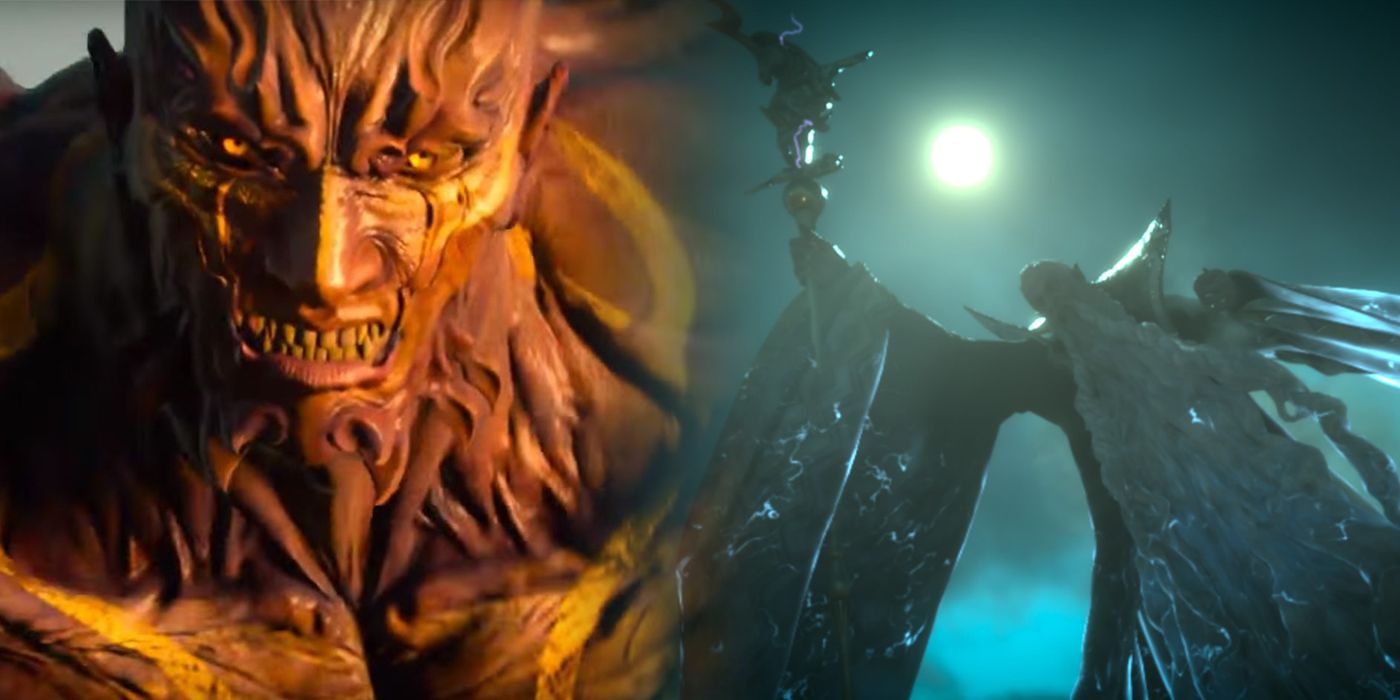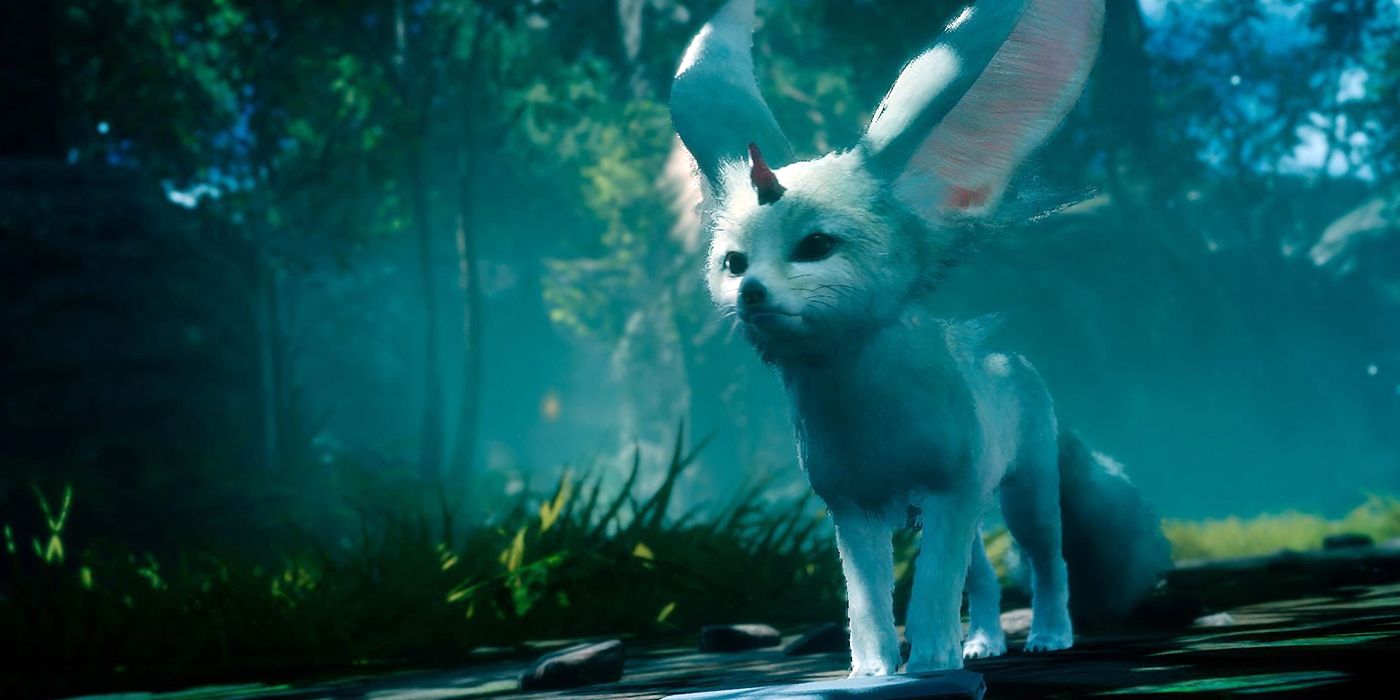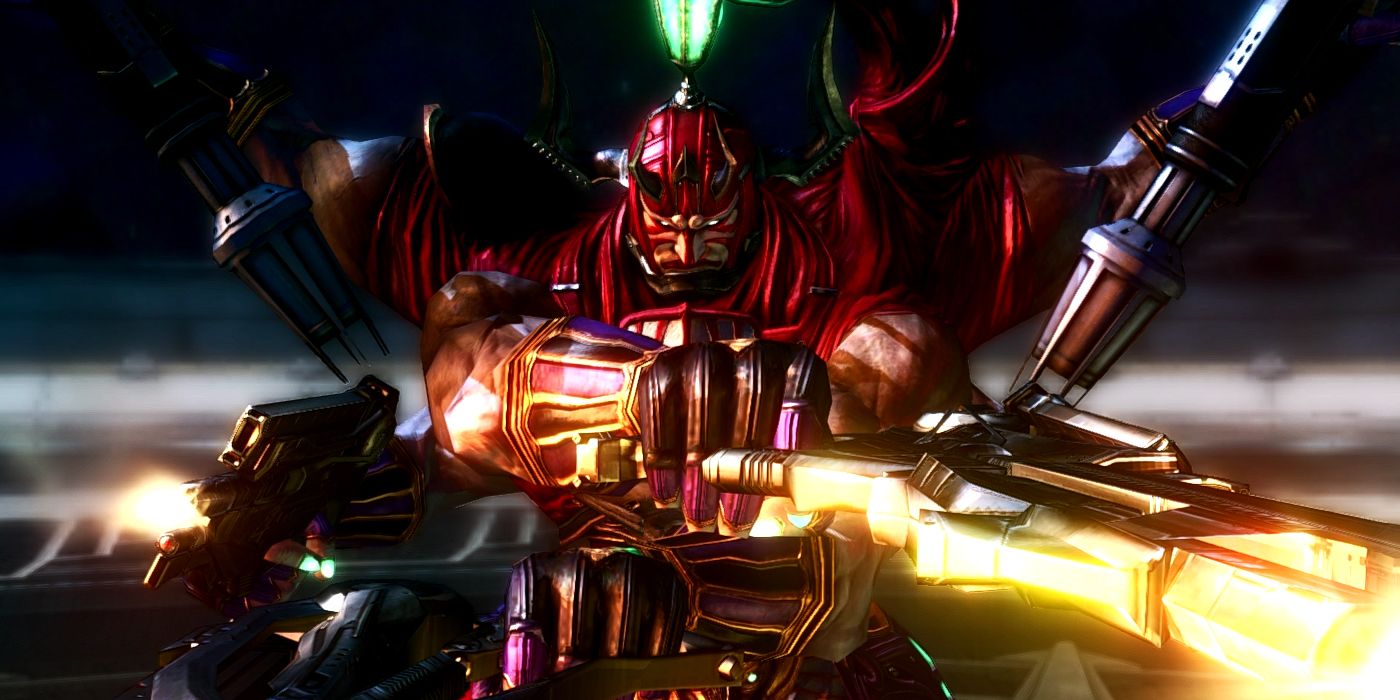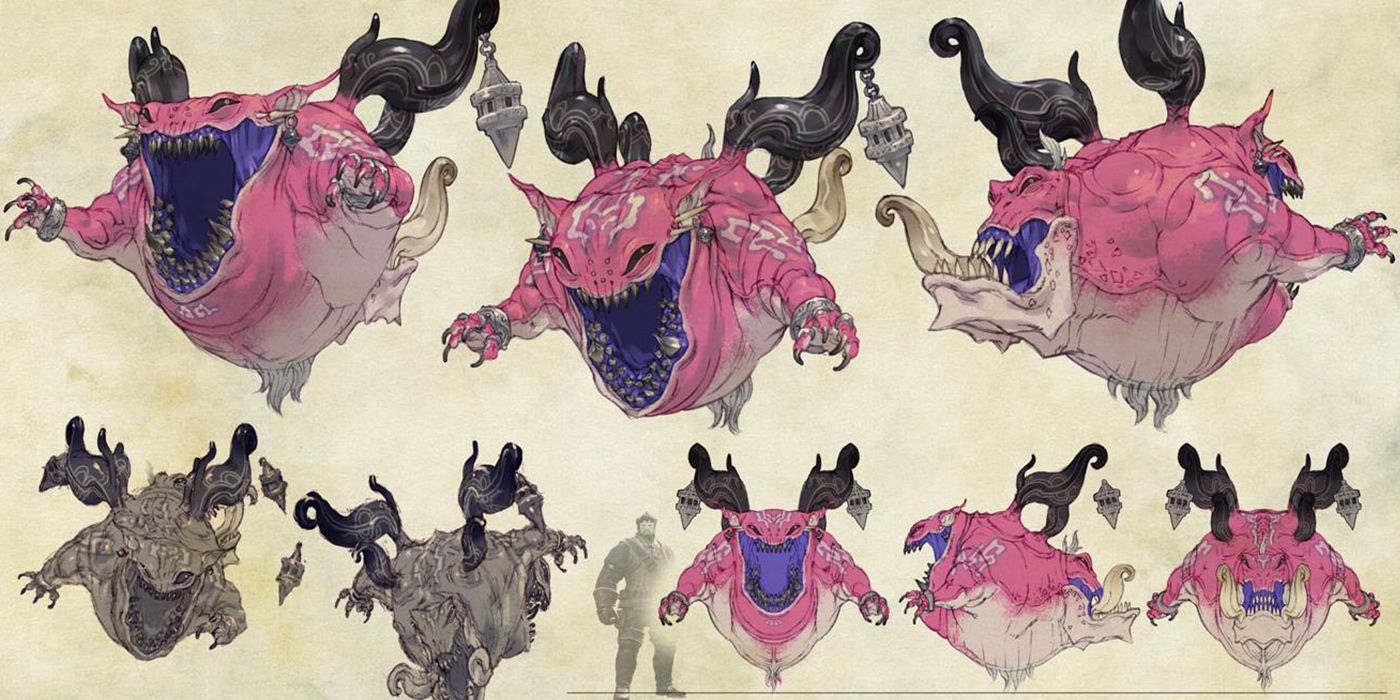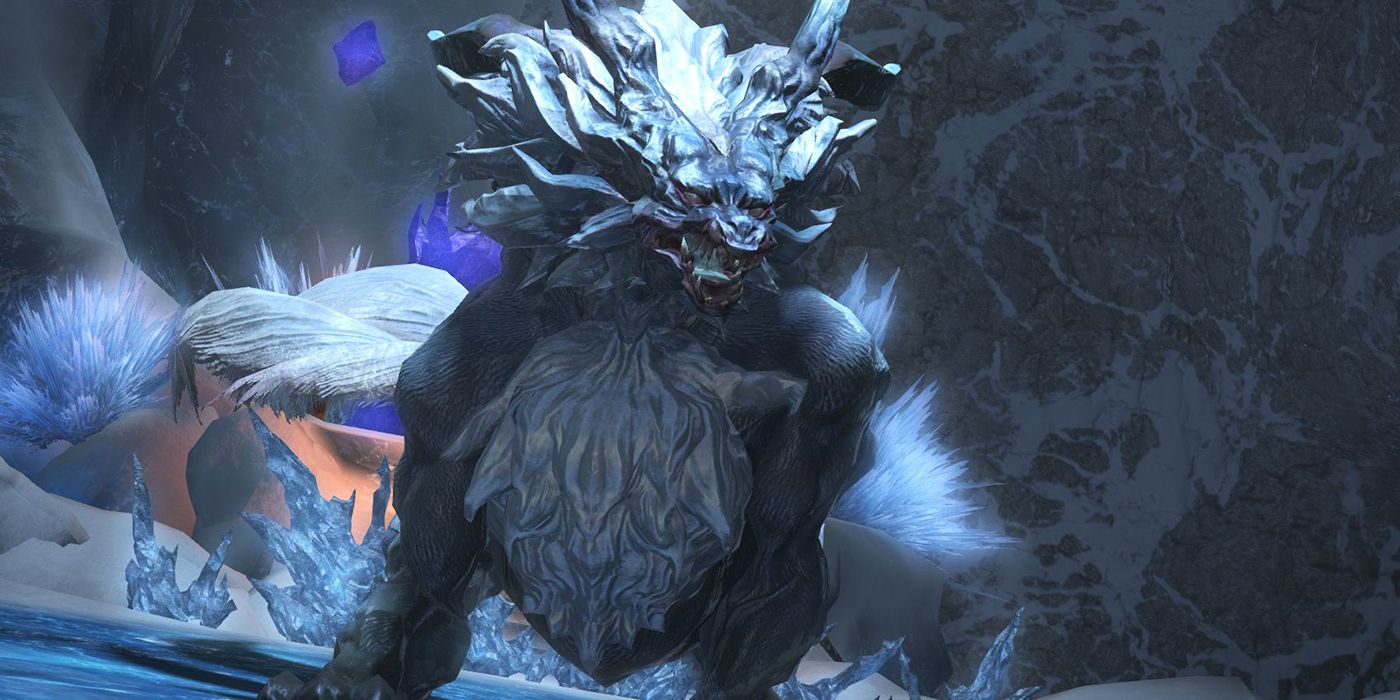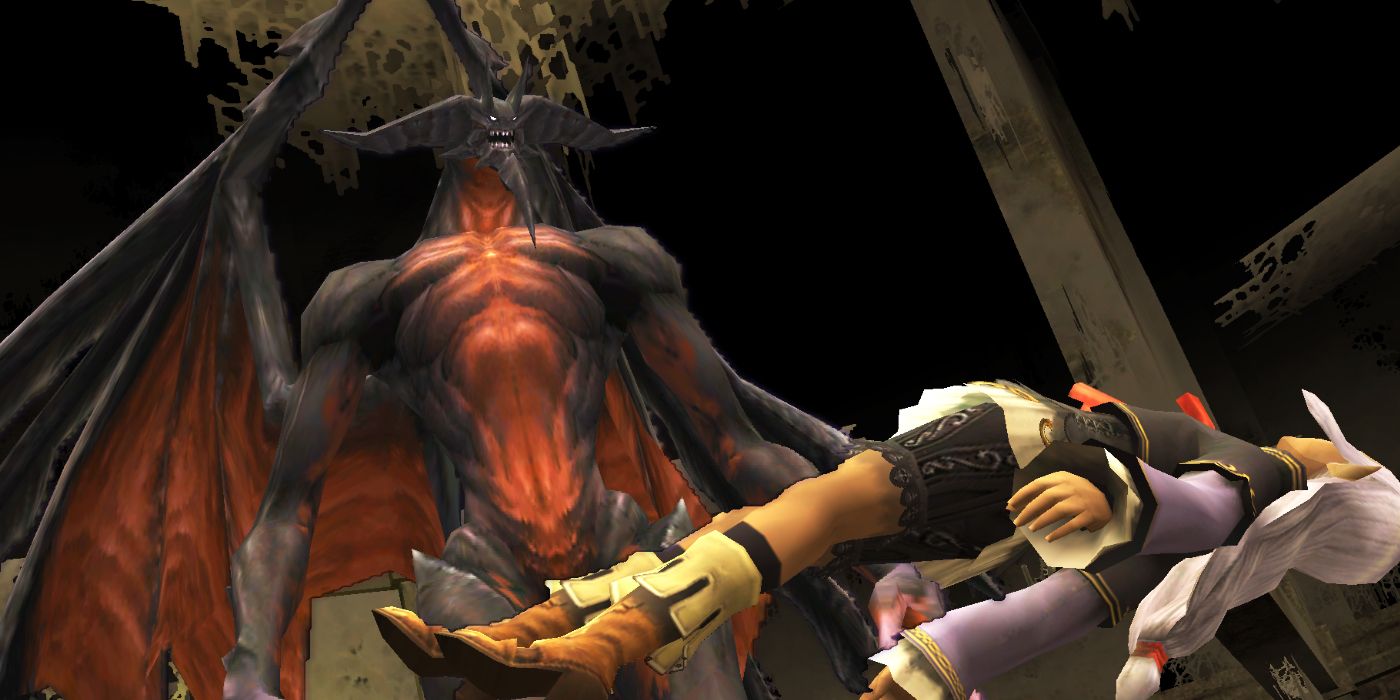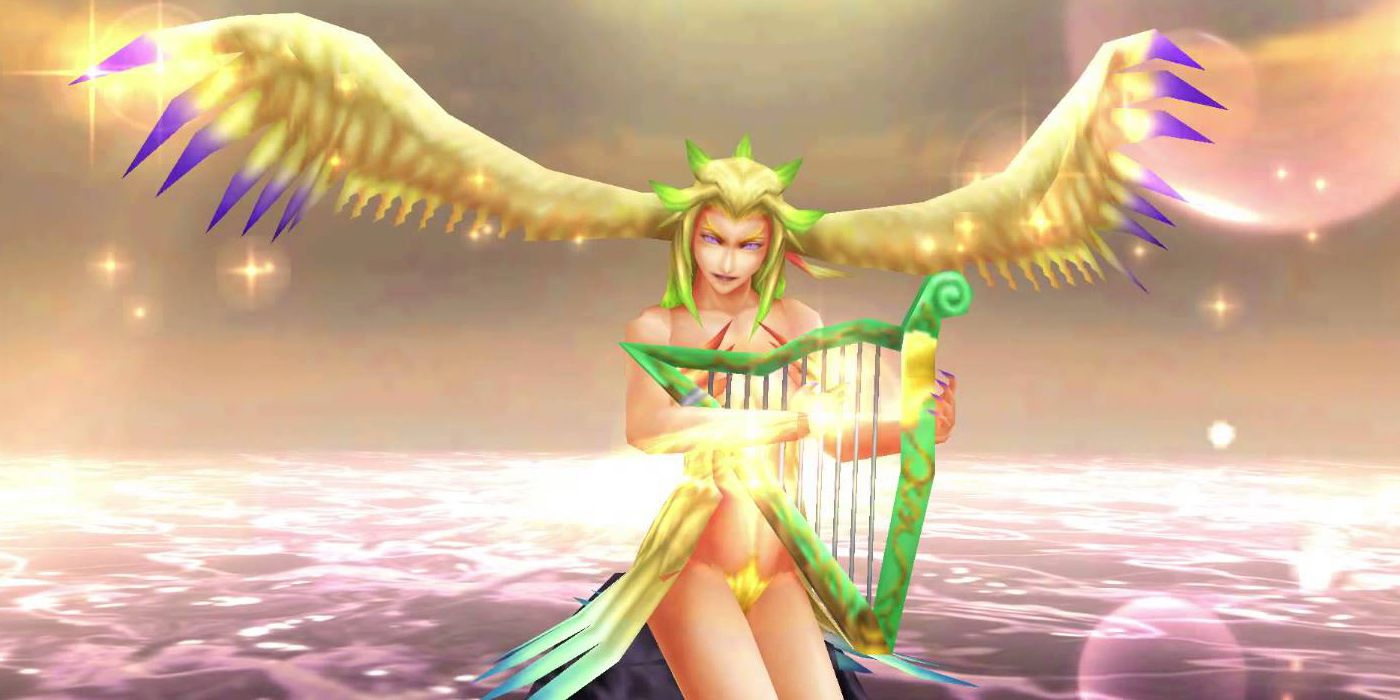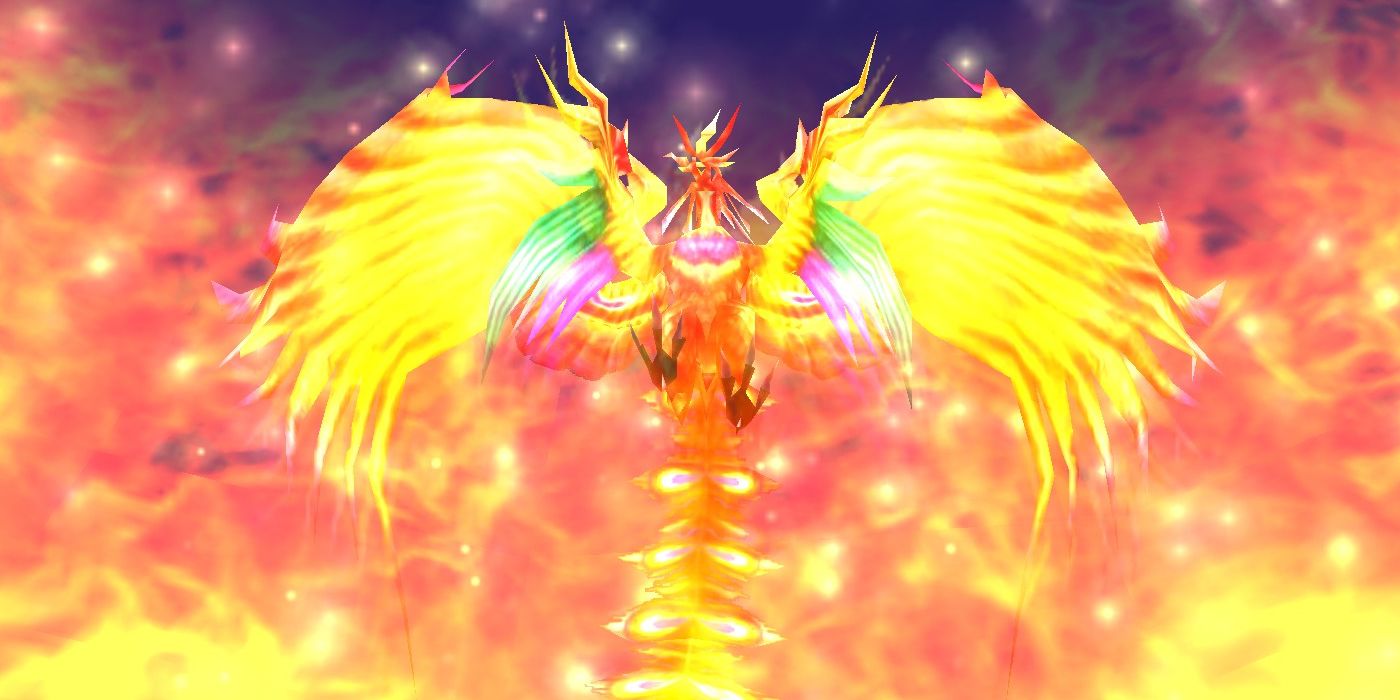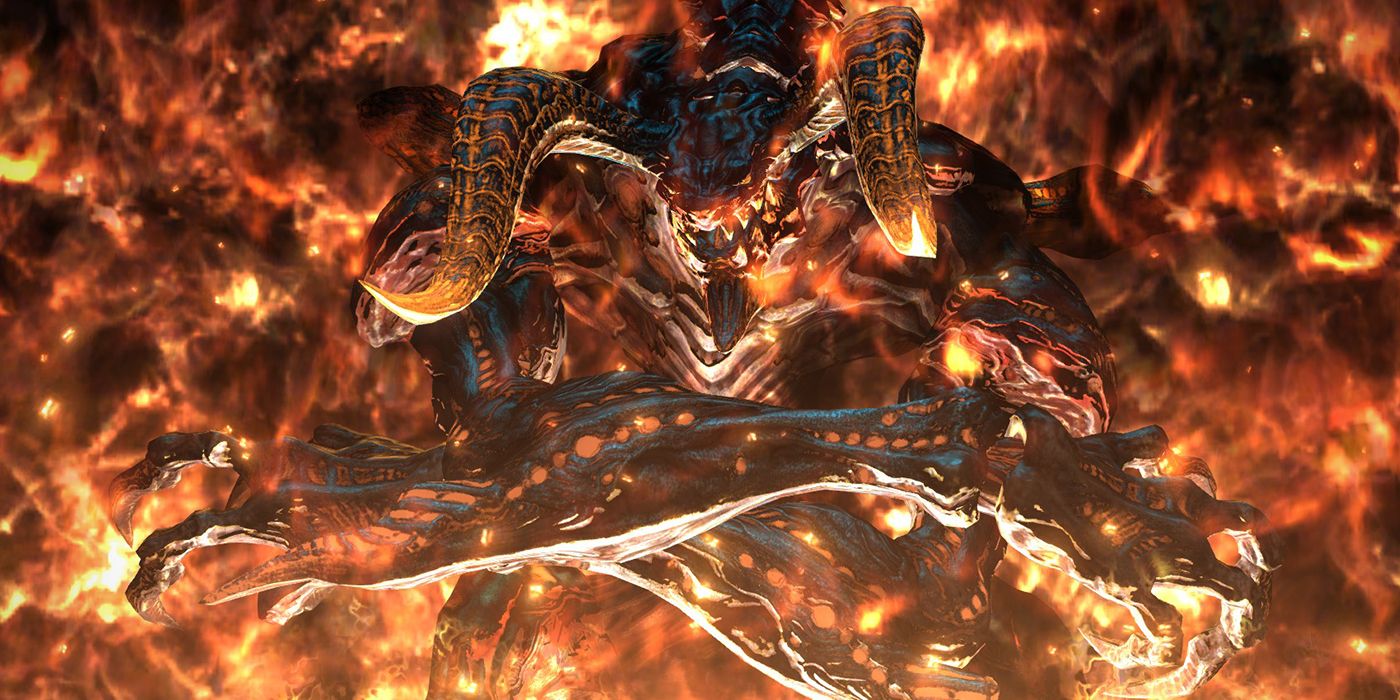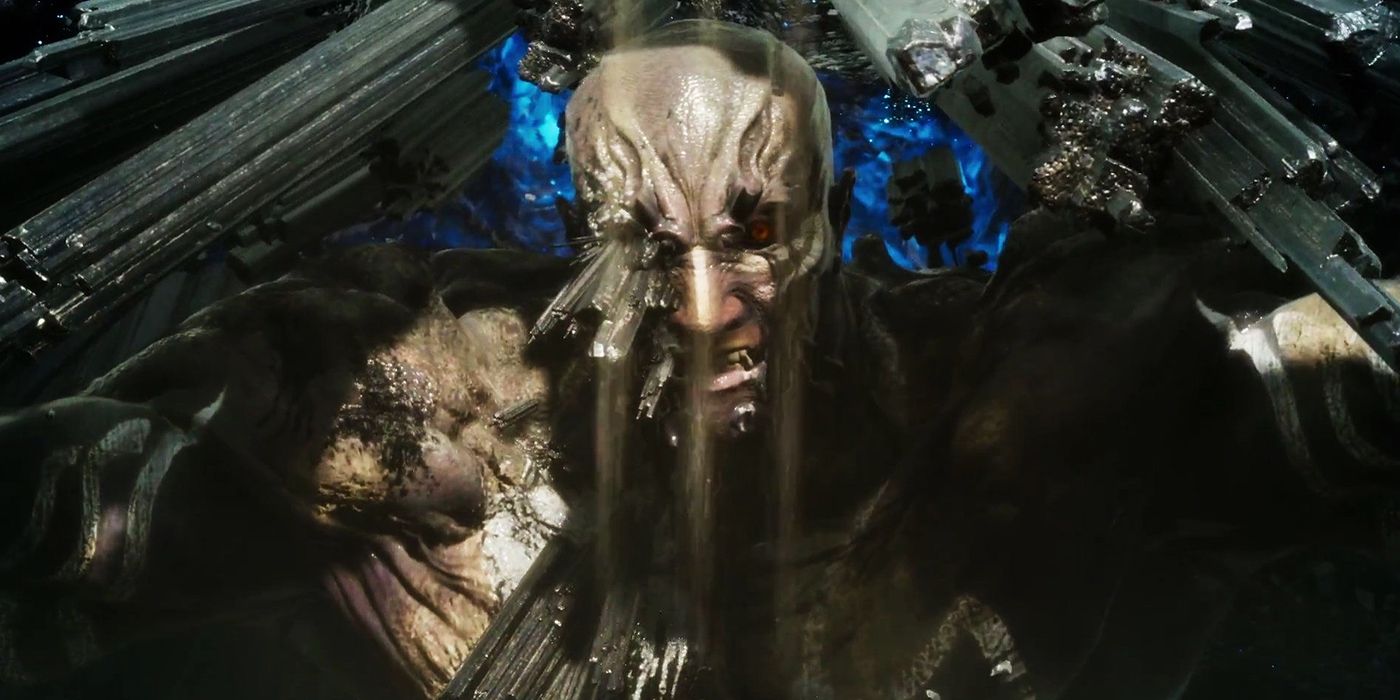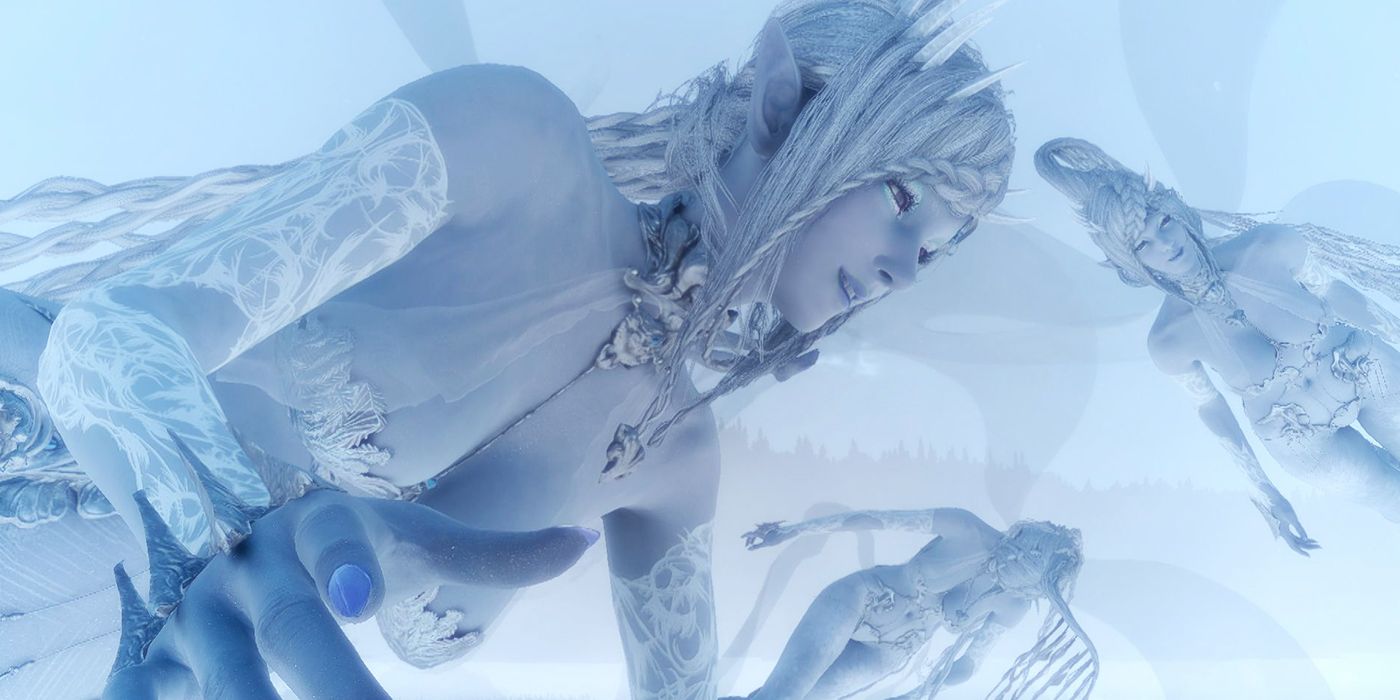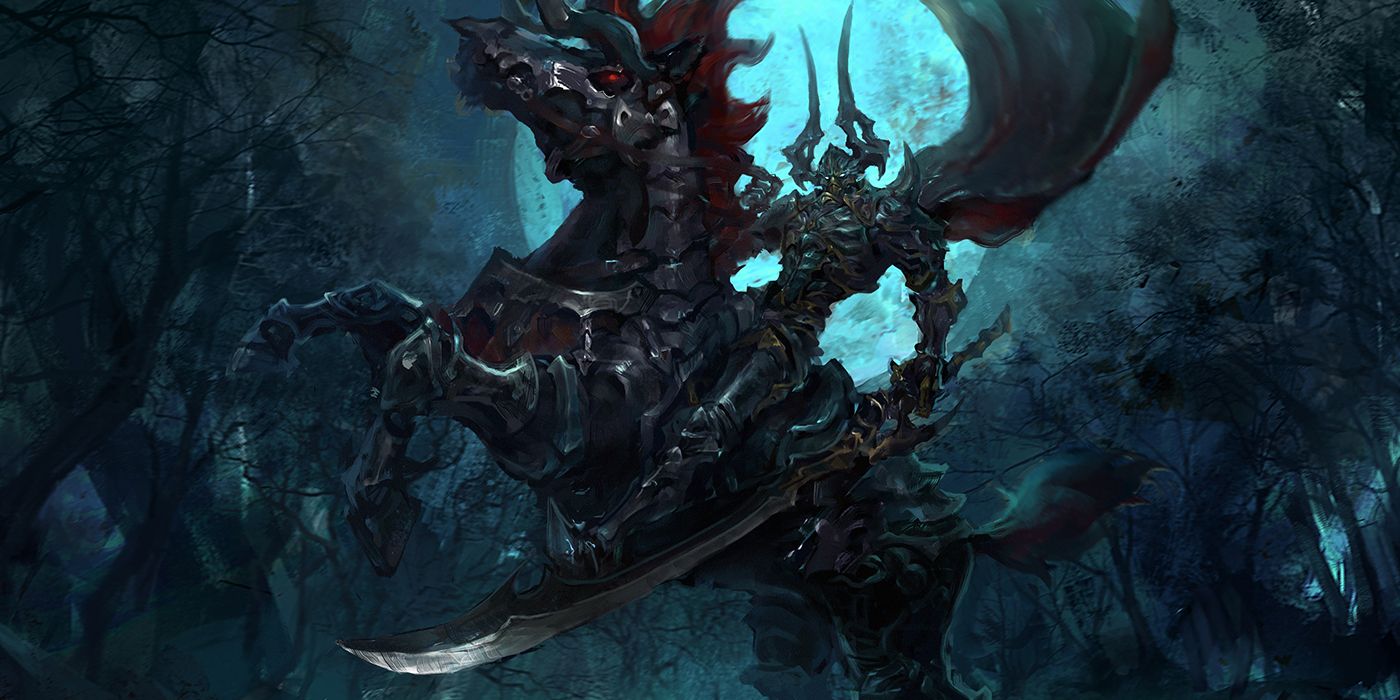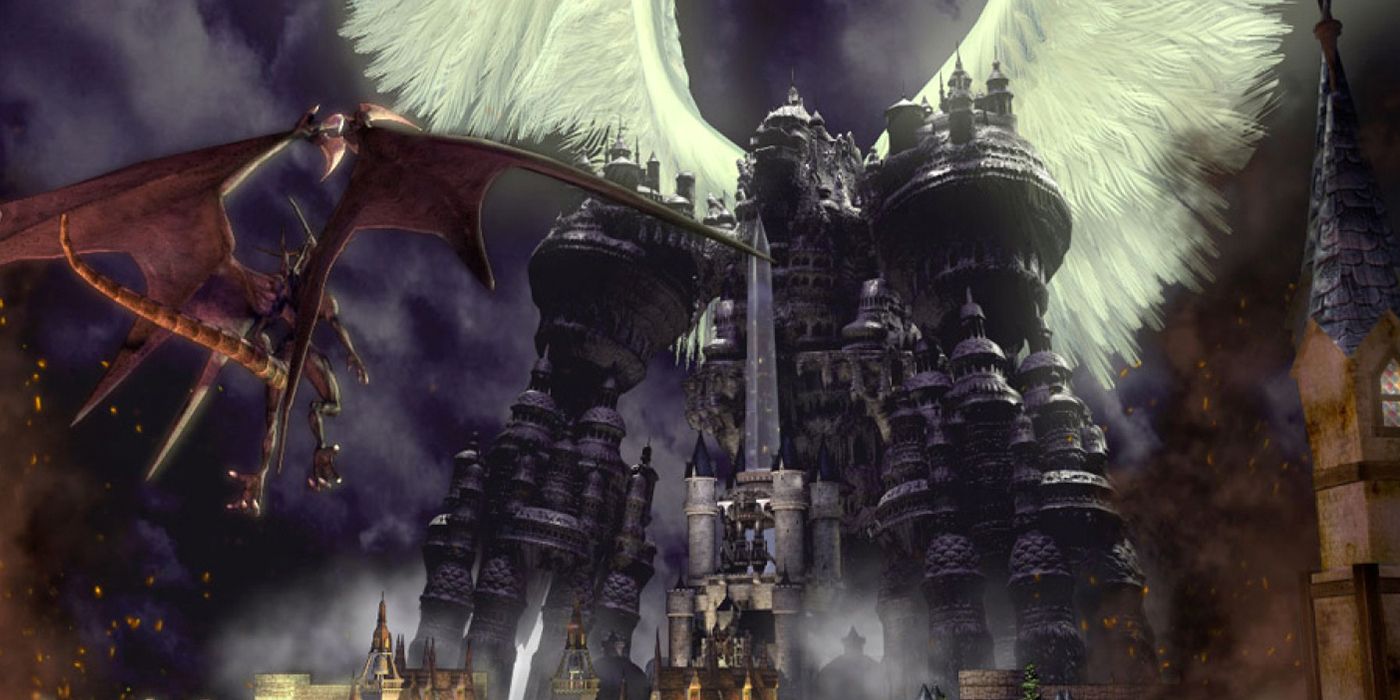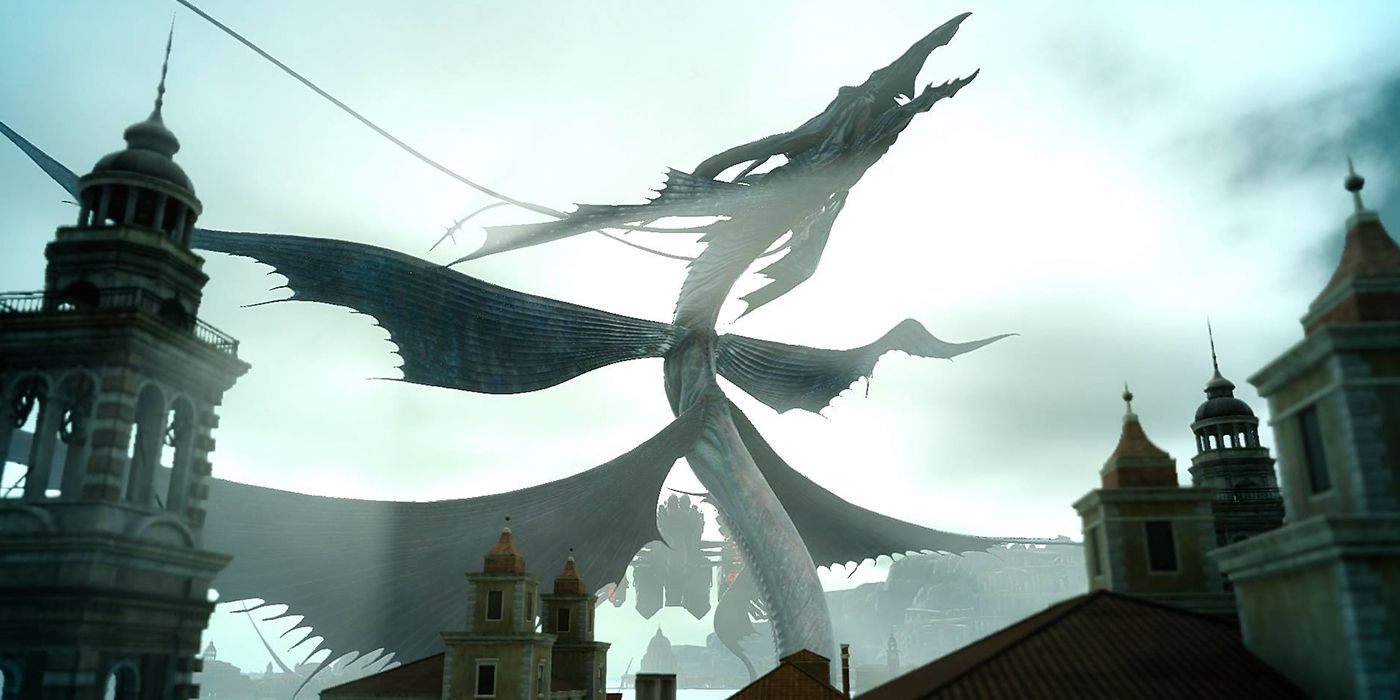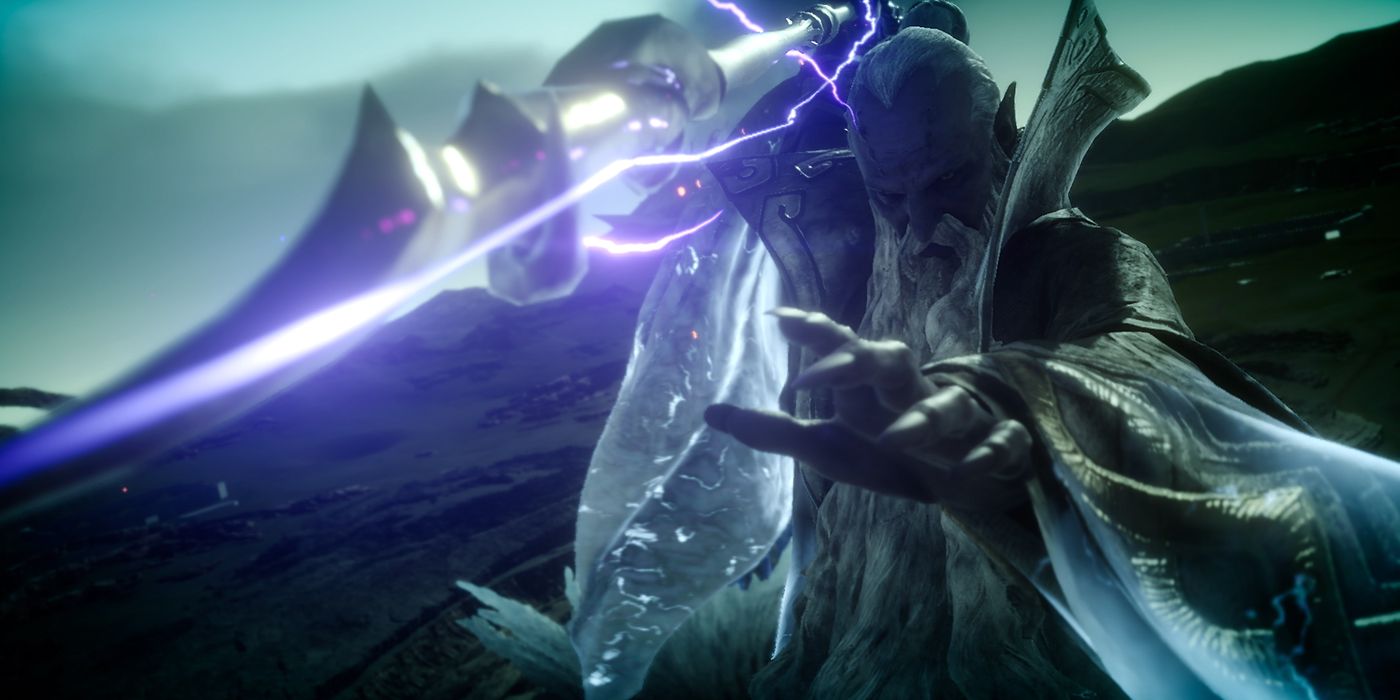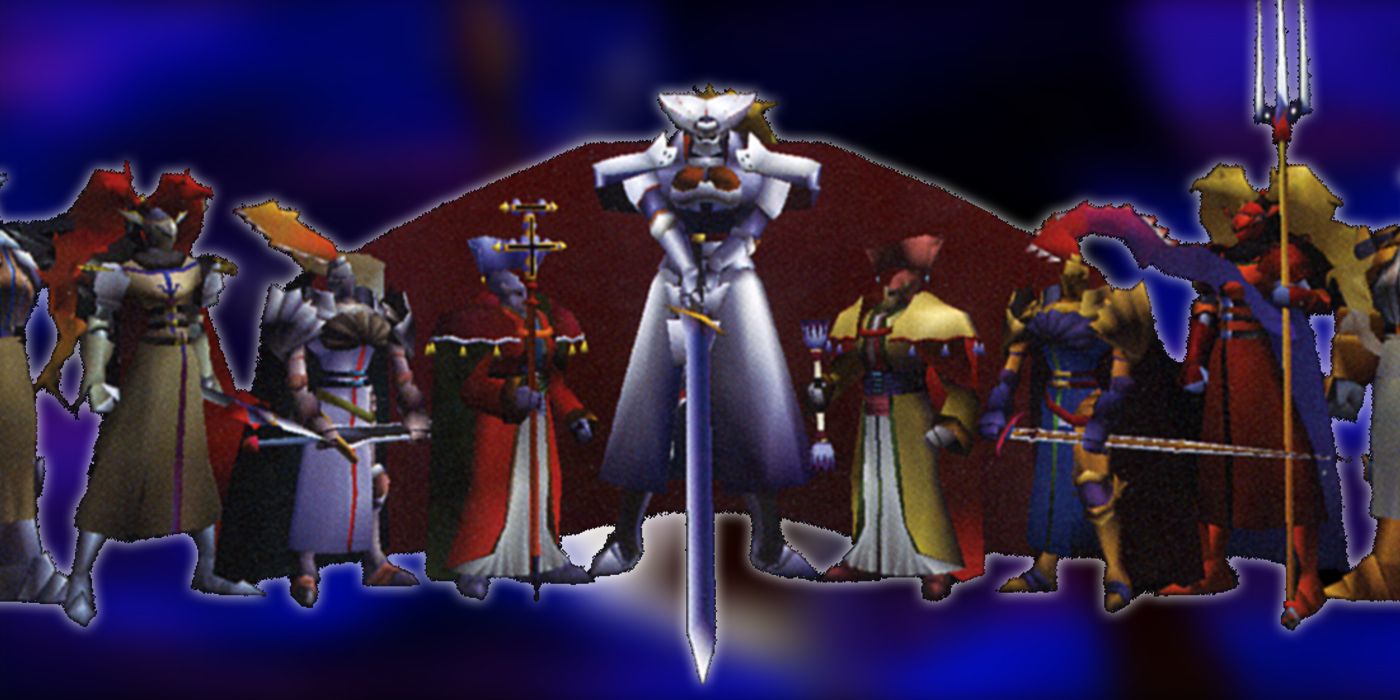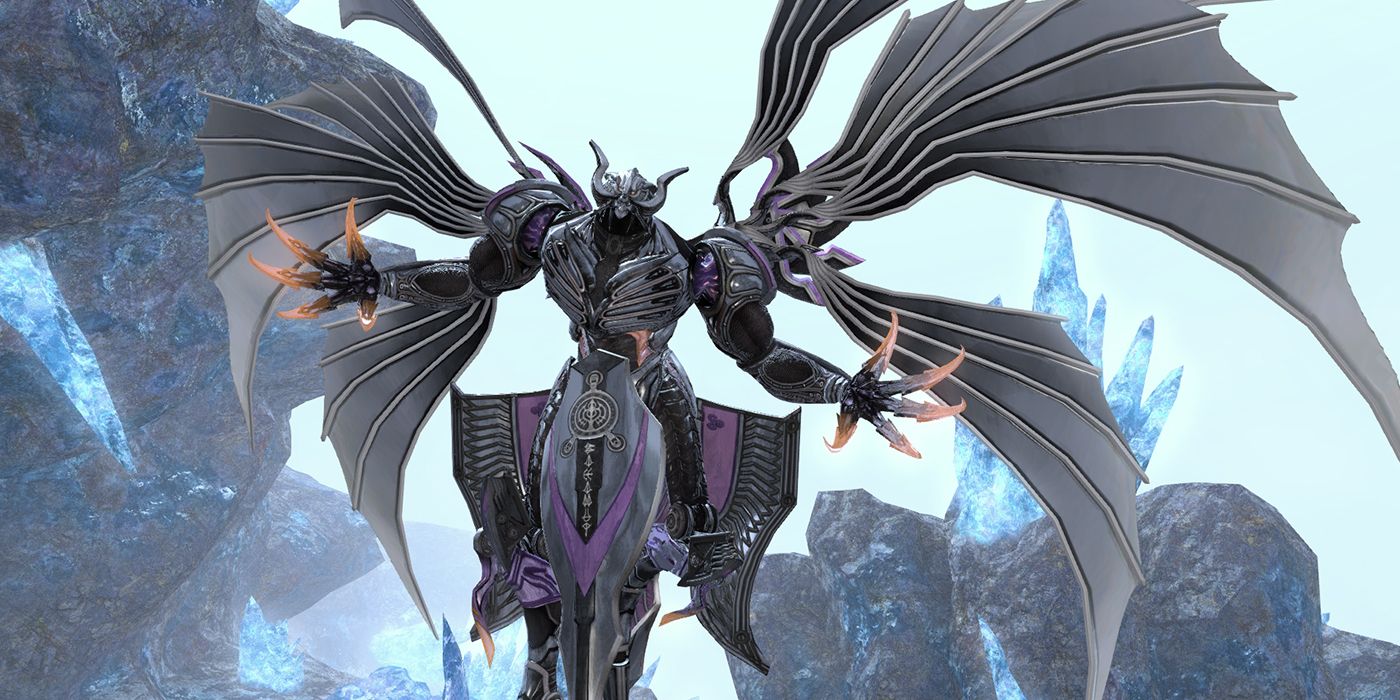After three decades, the Final Fantasy franchise has become something of its own subgenre. Each game in the series may be markedly different from the one that came before it, but at the same time, there’s also a number of different tropes and motifs that must make an appearance in every new entry - otherwise, it just wouldn’t be a Final Fantasy game. Chocobos, moogles, ridiculous hair-dos - at this point, they’re indelible aspects of the series.
The most spectacular of these tropes, however, are the Summons: though the names may change in each numbered entry, these massive, monstrously powerful beings always make an appearance. Sometimes, they’re tied into the game’s main story; other times, they’re simply another weapon in the player’s ever-growing arsenal of magic.
That being said, not all Summons are created equal. Most are amazing, to be sure, but there are definitely a few that don’t really seem to fit. Listing every Summon that’s ever been in a Final Fantasy game could fill its own book, so we’ve just taken all of the major Espers, Eidolons, and Aeons that have appeared in multiple games. Here are 16 Final Fantasy Summons, Ranked Worst To Best.
16. Carbuncle
Oh, Carbuncle - at least you try your best.
Final Fantasy is no stranger to status effect-based Summons, and there are plenty of examples that help to heal the party. Even so, these Summons tend to be a bit more situational than most - most players will have at least one character in their party that’s focused on keeping the team healthy, so dedicating a Summon to the exact same role doesn’t always make sense.
That goes doubly for Carbuncle: in most of its incarnations, Carbuncle casts a spell called Reflect. It’s a halfway decent spell, especially when going up against certain bosses... but in most Final Fantasy games, Reflect is a low-level, easy-to-find spell that doesn’t cost much in the way of MP. Simply put, Carbuncle is mostly a costly, inefficient way to use a spell that most players will find early on anyway.
Really, Carbuncle’s only redeeming feature is that it’s basically a cute little cat-monster, but that doesn’t make it any more useful in the middle of a fight. Pro tip: it’s best to save your MP for just about any of the other Summons on this list.
15. Gilgamesh
Alright, to be completely fair: Gilgamesh isn’t always a Summon. In fact, he’s rarely a summon: most of his appearances consist of either non-player character roles or as optional, late-game bosses. As of this writing, Gilgamesh has only acted as a Summon in two of the main series games.
Despite his rather shaky allegiance to the player, Gilgamesh is a formidable ally. His abilities typically center around his numerous blades, and depending on the game, Gilgamesh sometimes possesses the ability to kill some enemies outright, regardless of their remaining hit points. It can limit Gilgamesh’s abilities when going up against boss monsters, but his sheer power is usually enough to make up for any limitations in battle.
Also, from a design perspective, Gilgamesh is ridiculously cool. Sure, the original legends surrounding the fabled swordsman never seem to mention the extra arms or Samurai-inspired armor, but let’s be honest: a four-armed warrior wielding multiple weapons at the same time will always be awesome.
14. Typhon
Much like Gilgamesh, Typhon has only joined the player’s side on a few occasions, with his most memorable appearance as a Summon playing out in Final Fantasy VII.
And he’s a powerful Summon at that. Typhon’s main attack, called Disintegration, hits all enemies on the field with a barrage of elemental damage. Sure, it drains quite a bit of mana, but being able to attack enemies with Fire, Ice, Earth and Lightning damage at the same time is definitely worth it. Really, if whatever the player is fighting isn’t weak to at least one of those elements, it’s probably one of the end-game bosses.
But what really sets Typhon apart is its design. Though the original Typhon was a monstrous traitor to Mount Olympus throughout Greek mythology, the Typhon of Final Fantasy is a disgusting, two-headed, ghost-like creature seemingly based on the traditional Japanese yokai. To be fair, Typhon looked like a strange mix of a Gengar and Slimer back on the original PlayStation hardware - but, even with the severely limited graphical capabilities, Typhon is still one of the most memorable monsters from all of Final Fantasy VII.
13. Fenrir
From a design standpoint, Fenrir is a relatively standard take on the ‘giant wolf’ archetype. That’s not a bad thing, though: over the years, Square Enix has been able to take what was once a pretty bland design and turn it into something genuinely cool, even if it’s not entirely original (just look at the version from Final Fantasy IX).
What really holds Fenrir back is the inconsistency in its usefulness. In Final Fantasy IX, its basic attack was the status effect-based Image spell, making it extremely situational and relegating it to a decidedly second-tier level. However, in Final Fantasy IX and XI, Fenrir transformed into a relatively powerful ally, provided that players were willing to complete its required questlines.
Sadly, that’s basically it for Fenrir. Aside from a few scattered appearances throughout the series, Fenrir doesn’t have much of a presence. The great wolf is arguably one of the Summons with the most untapped potential, but it doesn’t look like Square Enix is quite ready to make full use of Fenrir just yet.
12. Diabolos
While many of the iconic Final Fantasy Summons first appeared in the earlier games, Square Enix has introduced a number of monsters in later installments as well. With its shift towards a more realistic art style, Final Fantasy VIII marked a huge graphical upgrade for the series as a whole - and that meant that the Summons would need an upgrade as well.
Enter Diabolos: a striking red-and-black dragon, the Summon was one of the most powerful monsters in all of Final Fantasy VIII. Not only that, but when Final Fantasy VI was remade for the Game Boy Advance, Square Enix went and added Diabolos into the game as a reward for beating an extremely difficult (though entirely optional) boss fight.
Unfortunately, Diabolos’ appearances have been somewhat limited over the past several years. The monster has appeared in numerous titles, but Diabolos’ role as a Summon was largely relegated to spin-offs and side games. Who knows - with Square Enix planning so much downloadable content for the recently-released Final Fantasy XV, maybe Diabolos can work his way back into the spotlight (or, at the very least, the party).
11. Siren
Remember Carbuncle, and his somewhat limited use due to focusing almost entirely on status effects? Well, Siren is a lot like that... except that her abilities are usually pretty helpful.
Debuting in Final Fantasy VI, Siren was one of the first Espers that players were able to obtain. And, while it’s true that her destructive power was limited in comparison to some of the more offensively-focused Summons, the ability to cast Silence on all enemies was a huge deal for players just starting their adventure. The idea of cutting off an enemy’s magic might not seem like much at first, but using Siren at the right moment could mean the difference between victory and defeat.
Since her debut, Siren’s appearance and abilities have largely remained the same. Like Diabolos, Siren hasn’t made too many appearances as a summon-able monster, though she has played roles in a number of the games’ different stories. And, with so many Summons being added into Final Fantasy XIV as DLC and content patches, there’s a good chance that Siren will be making another appearance before too long.
10. Phoenix
Much like the original legend that permeated the mythology of several different ancient cultures, the Phoenix is hugely important to the world of Final Fantasy. The Phoenix Down item, which resurrects dead party members, is a key aspect of every game in the series - not only that, but the Phoenix itself has played a key role in many Final Fantasy games.
As if being the embodiment of death and rebirth wasn’t enough, the Phoenix also acts as one of the most powerful fire-based Summons in the series. It may not boast as much raw potential as some of the other fiery Summons (more on them later), but the Phoenix comes packed with an interesting twist: once the damage has been dealt to the enemy, the Phoenix typically heals the player’s party. In some cases, the Phoenix is even powerful enough to revive downed characters and deal ridiculous amounts of damage.
The only thing that’s strange about the Phoenix is its attendance record: after appearing in multiple 16-bit and PlayStation-era games, Square Enix shifted away from using the Phoenix. There’s always a chance that it’ll return, but for the time being, it looks like the great bird of legend needs time to rest.
9. Ifrit
When it comes to dealing damage, it’s hard to beat the power of fire. In just about every Final Fantasy game, the majority of the enemies that players come toe-to-toe with are weak to some form of controlled combustion. Black Mages are typically gifted with the power of fire from the outset of their journeys, and fire-based spells are usually one of the best ways to deal damage throughout each game.
In many ways, Ifrit plays a similar role. In most Final Fantasy games, Ifrit is one of the first few Summons acquired, and boasts a relatively light mana cost - simply put, Ifrit is easy to find and even easier to use. Of course, ease of use isn’t everything, and any good Summon worth their weight should be capable of dishing out some major damage.
As it turns out, doling out damage is Ifrit’s biggest strength...for a time, at least. Sadly, most incarnations of the character tend to falter a bit towards the end of the game, but that doesn’t stop Ifrit’s Hellfire attack from being one of the strongest fire-based moves in the franchise. The Summon’s time in the spotlight is limited, true, but it’s well worth it.
8. Titan
The name ‘Titan’ evokes pure power. Ever since the stories of ancient Greek mythology spread across the land, the Titan has always been counted among the most powerful of deities - though, when it comes to Final Fantasy, the Titan has its sights set on something other than Mount Olympus.
Magic based around the power of the Earth itself tends to get pushed aside in most Final Fantasy games. Despite its raw power, many players lean towards the flashier, more explosive magics - and that’s a shame, because Earth magic is powerful on its own, and even more so in the hands of Titan.
Throughout most of the series, Titan is a mid-level Summon, in that players will typically find him after making some serious progress through the game. While it’s a shame that he’s not more readily available early on, it does mean that most versions of the Summon are extremely powerful - not only that, but many of Titan’s Summon sequences are one of the best in their respective games. After all, what’s a Summon without some style?
7. Shiva
Many of the Summons throughout the Final Fantasy series are known by their names alone - few, however, are known by both their proper name and their attack. Shiva has been one of fans’ go-to Summons since the earliest days of the series, and just saying the words ‘Diamond Dust’ is enough to send a shiver down their spines.
Typically, Shiva is one of the first Summons that players receive on their journey, but don’t let that fool you: Shiva is one of the more offensively powerful Summons in the series, and easily the most recognizable ice-based Summon in the franchise to date. There are others that use ice, sure, but none are quite as iconic as Shiva.
And the best part is that, regardless of what game you happen to be playing, there’s a good chance that Shiva has made an appearance. Save for the first two Final Fantasy, the ice goddess has appeared in every main entry in the series. It's crazy to think about, but Shiva has actually been around and outlasted several major video game franchises - if that's not worth a spot on this list, nothing is.
6. Odin
Everyone knows who Odin is. The great god of Norse mythology boasts a commanding presence in every adaptation he appears in - and Final Fantasy is no different.
In fact, Odin (along with his steed Sleipnir) is so powerful that the Summon typically focuses around a one-hit kill. Dubbed ‘Zantetsuken’, the move is so powerful that most enemies - including some bosses - are completely and utterly destroyed in a single hit. The only real drawback is that, in many of his appearances, Odin’s godly attack is typically limited to non-boss monsters: if the player attempts to use the attack on a foe that’s too powerful, the Summon fails without causing any damage whatsoever.
Even with its occasionally-limited use, Odin’s power is almost unparalleled - and, like Shiva, there are plenty of different games for players to call upon his power. Ever since Final Fantasy III (with the exclusion of Final Fantasy X), Odin has been coming down from the heavens to absolutely obliterate his enemies. Considering just how much fun it is to watch monsters literally fall apart, the great ruler of Asgard probably won’t be leaving the franchise anytime soon.
5. Alexander
Looking at the name ‘Alexander’ in regards to Final Fantasy probably evokes images of Alexander the Great...but, in reality, Final Fantasy’s Alexander is about as far-removed from the great conqueror as you can get. Alexander is no man - instead, it’s a massive, robotic castle that calls upon the heavens to destroy its enemies.
It definitely sounds strange - and, to be honest, it is. Despite the bizarre nature of Alexander, it also represents the greatest source of Holy-based damage in the entire series. Unfortunately, that also great limits its use in most battles (there aren’t a whole lot of enemies that are consistently weak to Holy damage throughout the games), but the sheer amount of destruction that Alexander can cause is more than enough reason to seek the Summon out.
Plus, there’s really nothing else like Alexander in the series: while most Summons are based on mythological beings or monsters, Alexander is a massive robotic fortress. While some may argue that it doesn’t fit with the rest of the bestiary, it’s hard to care when the Summon is obliterating an entire enemy party.
4. Leviathan
As this list has demonstrated, the Final Fantasy games are no stranger to plucking their Summons straight out of ancient mythology, and the Leviathan is a perfect example. Stories of sea monsters and giant serpents are almost as old as society itself - really, it just made sense to bring Leviathan into Final Fantasy’s pantheon of Summons.
Then again, name recognition only goes so far. Thankfully, Square Enix decided to stay true to the Leviathan’s long history and gave it one of the most powerful attacks in the entire series: even ignoring the fact that it’s guaranteed to hit all enemies on the field, Tidal Wave does an absolutely ridiculous amount of damage. Plus, it certainly helps that few monsters throughout the series have a strong resistance to water.
And, let’s be honest, Leviathan wouldn’t be this high on the list if it hadn’t appeared in multiple entries. It may not have a 100% solid attendance record (for whatever reason, Square Enix didn’t include Leviathan in Final Fantasy X or XII), but there are still more than a few ways that players can call on its tremendous power throughout the series.
3. Ramuh
Ramuh, like many of the other Summons on this list, has appeared in a multitude of Final Fantasy games - but, in terms of the series’ recent history, Ramuh holds a special place in fans’ hearts.
The fact that Final Fantasy XV actually made it to store shelves is still hard to believe - after all, the game made its debut as Final Fantasy Versus XIII all the way back in 2007. So, when the game’s playable demo was released to fans, it was the first tangible proof that the game would actually see an official release - and, thankfully, the demo was a strong indication of Final Fantasy XV's overall high quality.
What stood out most about the demo wasn't the presentation, or the characters, or the combat - no, what caught gamers' attention most was the sheer size and scope of the game. Fighting against a monster like the behemoth was already a clear step forward in terms of the series' scale, but the demo kicked things into overdrive once Ramuh joined the fray. Not only was it absolutely amazing to see such a classic Summon represented in such a way, but it was the pitch-perfect way to conclude Final Fantasy XV's first major gameplay release. The future of the franchise had been in question for a long time, but Ramuh helped reaffirm fans that the series was back on track.
2. Knights of the Round
Game-specific Summons can be a tough thing to judge. Usually, such Summons are designed to either replace an already-existing Summon, or help the game stand out from the rest of its franchise brethren. In the case of Final Fantasy VII, however, the Knights of the Round Summon was designed to be the player’s greatest weapon.
Thirteen knights, each with their own unique weapon or spell, attack the player’s designated target - and, more often than not, completely obliterate it. The Summon’s Ultimate End attack is usually more than enough to kill most of the game’s bosses, and can make the final battle against Sephiroth a complete cakewalk. There’s only a single enemy that the Summon shouldn’t be used against, simply because of a retaliatory attack - otherwise, the Knights reign supreme throughout the entire game.
There’s also a grandeur to Knights of the Round that Square Enix has had trouble matching since their debut. Even when the developers brought the Knights of the Round back in Final Fantasy XIV, it just didn’t have the same impact as their original appearance. To put it simply, Final Fantasy VII remains a favorite for many fans, and the Knights of the Round Summon is one of the reasons why.
1. Bahamut
Few things in Final Fantasy have endured throughout the series' entire history. Summons as fans know them really only debuted in Final Fantasy III, and even the most iconic of the lot have skipped out on multiple games. Considering that the series has been around for thirty years, it’s not that surprising that much of it would change as time went on - and yet, there’s one creature from Final Fantasy that has been nigh inseparable from the series since its debut in 1987.
The Dragon King Bahamut made his debut alongside of the Warriors of Light in the original Final Fantasy, and has made some sort of impact in nearly every game since. Though it doesn’t always take the form of a Summon, Bahamut always represents the pinnacle of power in each of its respective games - only a select few spells and creatures can claim to match the power of the king of the dragons.
...but Bahamut is more than just a powerful monster. While seeking out the Dragon King is certainly fun, it’s also one of the ways in which Final Fantasy has cemented itself as a fixture in the video game industry. No matter how much the gameplay, the characters, or the stories change, there are a few constants that keep Final Fantasy feeling like a singular franchise - and Bahamut is a prime example of that. The Dragon King is more than just a Summon: Bahamut is a integral part of what makes the series so memorable for so many people.

